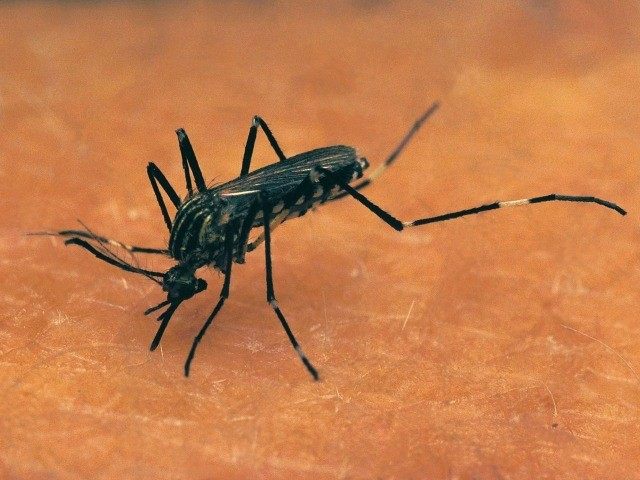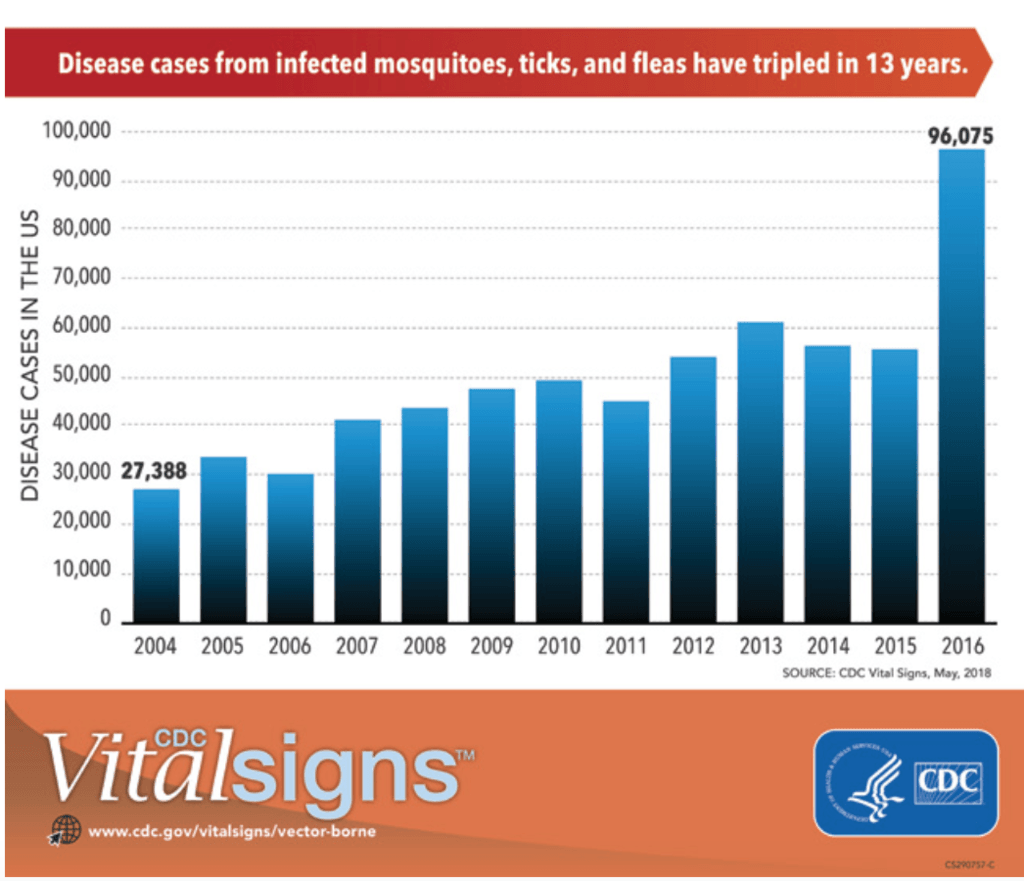The Centers for Disease Control and Prevention (CDC) announced Tuesday that the number of Americans who have become ill from insect bites has tripled during the last 13 years.
In 2016, an estimated 96,075 diseases from mosquitoes, ticks, and fleas were reported — up from 27,388 in 2004, according to the CDC’s National Diseases Surveillance System.
The number of infections from 2015 to 2016 increased by 73 percent, with the majority of insect-related infections diagnosed as the Zika virus and 41,680 cases reported. When a pregnant woman is infected, Zika can result in severe birth defects.
Ticks, mosquitoes, and fleas accounted for 36,429 cases of Lyme disease in 2016, which is almost double the number of people sickened in 2004, according to the CDC. Lyme disease can attack the heart and nervous system.
“Illnesses from mosquito, tick, and flea bites have tripled in the U.S., with more than 640,000 cases reported during the 13 years from 2004 through 2016,” the CDC reported. “Nine new germs spread by mosquitoes and ticks were discovered or introduced into the United States during this time.”
“Zika, West Nile, Lyme, and chikungunya—a growing list of diseases caused by the bite of an infected mosquito, tick, or flea—have confronted the U.S. in recent years, making a lot of people sick. And we don’t know what will threaten Americans next,” CDC Director Robert R. Redfield said. “Our Nation’s first lines of defense are state and local health departments and vector control organizations, and we must continue to enhance our investment in their ability to fight against these diseases.”
The state with the highest number of cases between 2004 and 2016 was California, which reported 9,254 cases. That pales in comparison to the U.S. territory of Puerto Rico, where 80,534 cases were reported during that period.
Reuters reported that climate change could be a factor in the increasing insect population.
“The increases may be a result of climate change, with increased temperatures and shorter winters boosting populations of ticks, mosquitoes and other disease-carrying creatures known as ‘vectors,’” Reuters reported.
“It enables these ticks to expand to new areas,” Lyle Petersen, director of the CDC’s Division of Vector-Borne Diseases, said in the Reuters report. “Where there are ticks, there comes diseases.”
One subtitle of the CDC report said, “U.S. Not Fully Prepared.”
“Widespread and difficult to control, diseases from mosquito, tick, and flea bites are major causes of sickness and death worldwide,” the CDC report stated. “The growing number and spread of these diseases pose an increasing risk in the U.S. The report found that the nation needs to be better prepared to face this public health threat.”
The report also noted the role of global travel.
“The increase in diseases caused by the bite of an infected mosquito, tick, or flea in the U.S. is likely due to many factors,” according to the report. “Mosquitoes and ticks and the germs they spread are increasing in number and moving into new areas. As a result, more people are at risk for infection.”
“Overseas travel and commerce are more common than ever before,” the report said. “A traveler can be infected with a mosquito-borne disease, like Zika, in one country, and then unknowingly transport it home.”
“The CDC said more than 80 percent of vector-control organizations across the United States lack the capacity to prevent and control these fast-spreading, demanding illnesses,” Reuters reported.
Follow Penny Starr on Twitter.


COMMENTS
Please let us know if you're having issues with commenting.